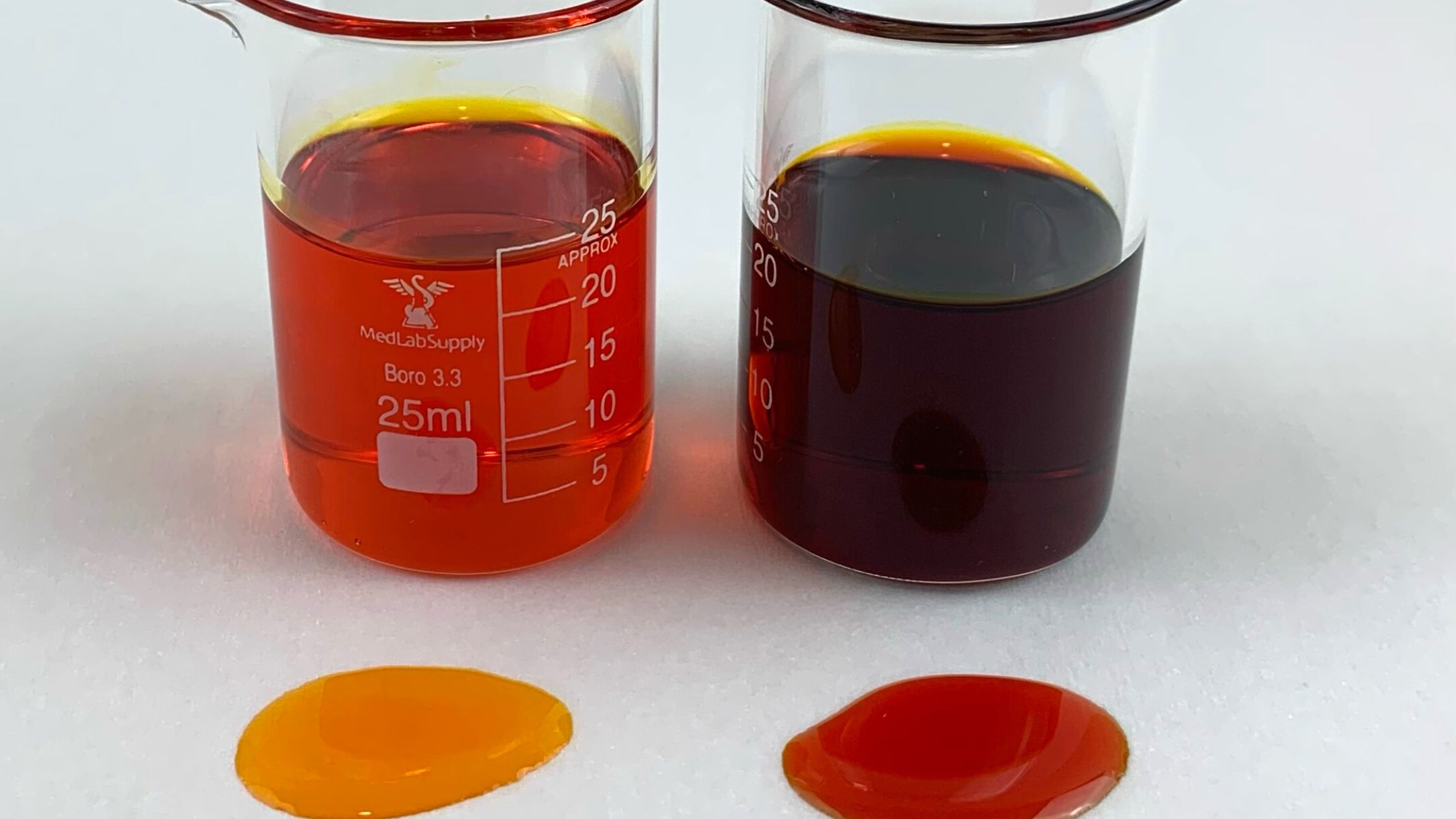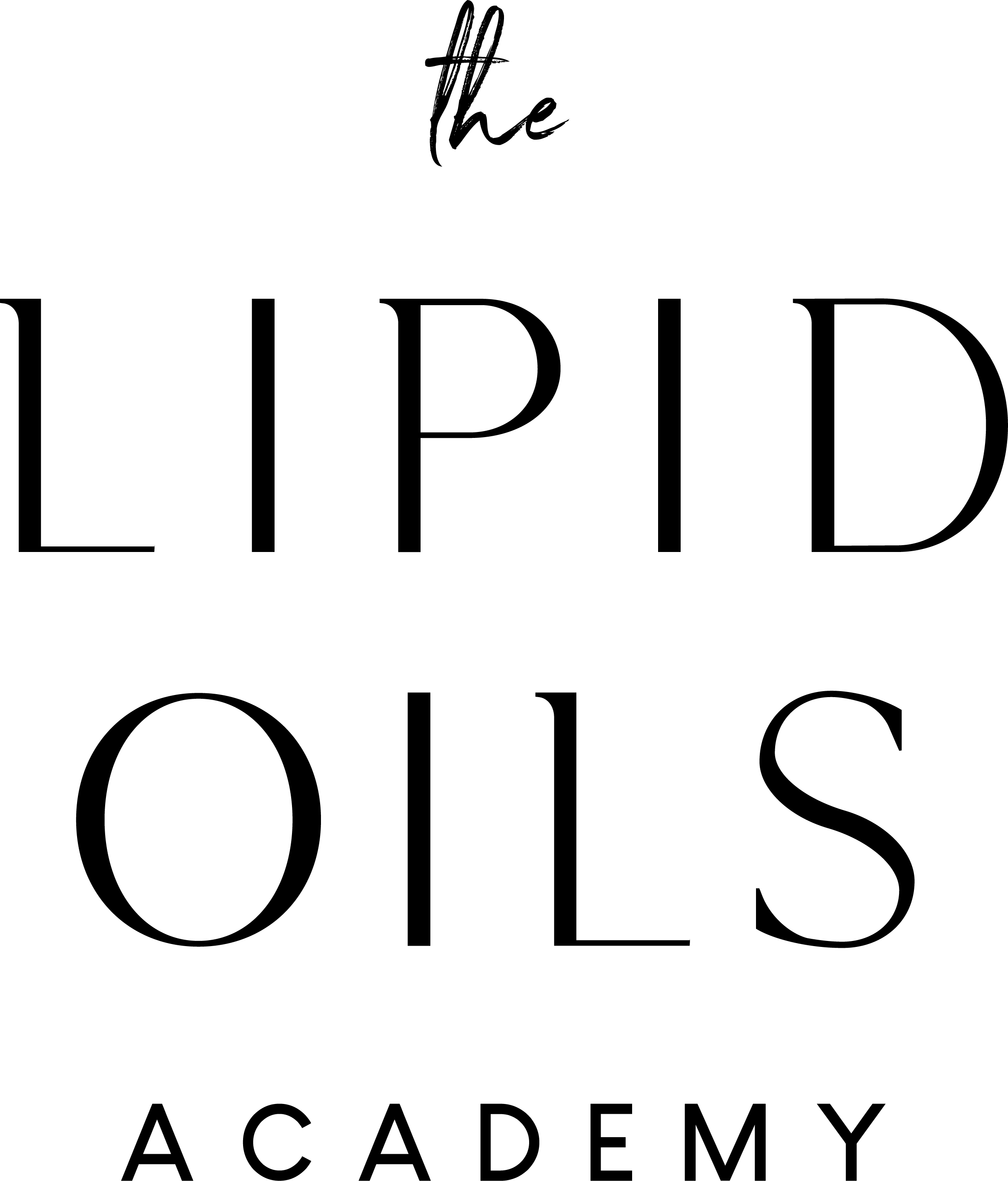The list of wonderful and effective carrier oils and lipid oils for skincare is long and varied.
Here are eight that stand out for their versatility. These oils fall into the category of 'singles', individual carrier oils that are so well balanced and nourishing that you can use them alone as a facial oil. Of course each of these oils will also make a good base for facial oils, oil serums, body care and other skincare formulations.
The oils below are divided into four sections, normal skin, oily skin, dry skin and highly nourishing oils.
Oils for normal skin
Here are two oils that are well balanced and good for a wide range of skin types. These are oils you can use for normal skin to maintain, nourish and protect.
Cranberry seed oil
Cranberry seed oil has a balanced fatty acid profile with nearly equal ratios of omega-3, omega-6, and omega-9 fatty acids.
The oil is typically deep yellow in color with a mild neutral scent and absorbs quickly into the skin with a light feel.
As a facial oil, cranberry seed oil helps nourish the skin and protect against free radical damage.
In the unsaponifiable portion, cranberry seed oil contains provitamin A carotenoids, Vitamin E tocopherols and tocotrienols polyphenols, and anthocyanidins.
Notable: very balanced fatty acid profile.
Use: Use alone as a facial oil or as a base for facial oil formulations and oil serums.
INCI: Vaccinium macrocarpon (Cranberry) Seed Oil
Dominant fatty acid: Linoleic acid
Similar oils: blueberry seed oil
Marula oil
Marula oil has a silky feel on the skin and absorbs well. It has anti-inflammatory properties and can help the skin retain moisture while repairing the barrier function.
It is high in oleic acid (70%), with some linoleic acid (6%), and saturated palmitic acid (10%).
Marula oil is rich in antioxidants including polyphenols, flavonoids, and vitamin E.
Notable: Marula oil has a wonderful silky feel on the skin.
Use: alone as a facial oil or as a base oil for facial oils, massage, and body oils, oil serums, as a carrier oil for essential oils or as a base for emulsions.
INCI: Sclerocarya birrea (Marula) Seed Oil
Dominant fatty acid: Oleic acid
Similar oils: Plum kernel oil
Carrier oils for dry and mature skin
For dry and mature skin you can use either of the oils above, but for added protection and nourishment here are two additional oils you can try.
Argan oil
Argan oil has a lovely balance of monounsaturated oleic acid (47% - 47%), and polyunsaturated linoleic acid (31% - 35%). The balanced monounsaturated and polyunsaturated fatty acids give it a protective quality. Argan oil helps calm inflammation and redness on the skin.
Argan oil absorbs well and doesn’t leave an oily feeling on the skin. It helps calm redness and inflammation and is especially good for very dry skin. In the unsaponifiable portion, it contains vitamin E and provitamin A carotenes, and polyphenols.
Notable: Until argan oil is deodorized it has an intense and very unpleasant smell. Fortunately, most argan oil sold for skincare has been deodorized.
Use: Argan oil can quickly become a go-to carrier oil to use as a facial oil, hair oil, and as a base for formulating.
INCI: Argania spinosa (Argan) Kernel Oil
Dominant fatty acid: Oleic acid
Similar oils: Baobab oil
Baobab Oil
Baobab oil has a lovely balance of oleic and linoleic fatty acids and contains saturated palmitic acid which is protective and nourishing.
It is an oil rich in vitamins, minerals, and other plant compounds that are good for cellular regeneration, collagen and skin tissue elasticity, and skin repair.
Baobab oil has a mild, neutral scent and is typically pale yellow to gold in color.
Notable: the baobab tree can live for thousands of years. It is often called the upside-down tree for its tremendously thick trunk and relatively sparse branches at the top.
Use: As a base oil for skincare formulations and alone as a facial oil.
INCI: Adansonia digitata (Baobab) Seed Oil
Dominant fatty acid: Oleic acid
Similar oils: Argan oil
Carrier oils for oily skin
To help balance and nourish oily skin look for carrier oils that contain naturally occurring tannins. Here are two oils that will help tone the skin, calm inflammation, tighten pores and rebalance over active skin.
Hazelnut oil
Hazel nut oil is high in oleic acid ( 75%) that, combined with tannins naturally present in the oil makes it slightly astringent like camellia seed oil.
The tannins in the unsaponifiables portion help tone and tighten pores and promote circulation while the generous squalene content nourishes skin lipids.
Hazelnut oil is especially good for oily skin with overactive sebaceous glands. It helps to calm oil production and tighten the pores. It is considered a dry oil, penetrating without leaving an oily or greasy feel.
High vitamin E content protects against oxidative damage and helps repair.
Notable: hazelnut seed oil is also a lovely culinary oil for dressings and salads.
Use: Use as the foundation for a facial oil formulation for oily skin and as a carrier oil for aromatherapy and essential oils.
INCI: Corylus aveliana (Hazelnut) Oil
Dominant fatty acid: Oleic Acid
Similar oils: Camellia seed oil
Camellia seed oil
Camellia oil is high in monounsaturated oleic acid (80%), giving it excellent skin- and hair-conditioning properties.
Tannins in camellia seed oil make it naturally astringent and good for toning and tightening pores.
In the unsaponifiable portion, camellia seed oil also contains polyphenols, vitamins A, C, and E, and other antioxidants also protect the skin from environmental exposure.
Notable: camellia seed oil comes from the same plant that produces black and green tea.
Use: Use camellia seed oil alone or as a base for a facial oil for oily skin to help balance oil production, calm inflammation and tone and tighten pores. Camellia seed oil can also be used as a carrier oil for essential oils.
INCI: Camellia sinensis (Camellia) Seed oil
Dominant fatty acid: Oleic acid
Similar oils: hazelnut oil
Carrier oils for skin repair and deep nourishment
For deep repair, nourishment and protection two oils that stand out are pracaxi oil and sea buckthorn seed oil. Both can be used alone as a facial oil or in combination with other oils.
Sea buckthorn seed oil
The sea buckthorn shrub gives us two different oils, the seed oil pressed from the fruit seed, and the fruit oil pressed from the oily fruit around the seeds.
Sea buckthorn fruit oil is high in antioxidants and is typically a highly pigmented red-orange oil. The fruit oil is wonderful as an addition to facial oils and oil serums but too pigmented to use alone as a facial oil.
The seed oil has a neutral scent and minimal pigments compared to the fruit oil. Sea buckthorn seed oil is one you can use alone as a facial oil for dry skin or in facial oil and oil serum formulations.
Notable: Sea buckthorn seed oil and fruit oil have two very different fatty acid profiles.
Use: Combine sea buckthorn seed oil with sea buckthorn fruit oil to make a lovely and powerful facial oil for dry skin. The seed oil can be used alone as a facial oil or as a base oil for formulating.
INCI: Hippophae rhamnoides (Sea Buckthorn) Seed Oil
Dominant fatty acid: Linoleic acid
Similar oils: Tucuma oil

Sea buckthorn seed oil and berry oil
Pracaxi oil
Pracaxi oil has one of the highest concentrations of behenic acid, similar to but higher than moringa oil. Behenic acid is a saturated fatty acid that is poorly absorbed by the body when ingested but adds protective properties to oils when used externally.
On the skin, pracaxi oil feels protective and silky with a rich oil feel. It absorbs well when used in small amounts. It is an exceptional skin care oil for dry skin and for use in very dry climates.
The high percentage of saturated behenic acid results in an oil that is often solid at cooler room temperatures but melts on contact with the skin. In warm climates praxaci oil is liquid.
Notable: Pracaxi oil is used to treat hyperpigmentation, scarring, and sun damage.
Use: Use as a facial oil for dry skin or as a base oil for a facial oil or body oil formulation. Used sparingly, praxaci oil is good for hair care to nourish, protect and add a glossy shine.
INCI: Pentaclethara macroloba (Pracaxi) Seed Oil
Dominant fatty acid: Oleic acid
Similar oils: Abyssinian oil
What are some of your favorite oils for skincare? Leave a question or a comment below.

I’m wondering if Camellia Seed oil would be effective on rosacea breakouts or red itchy, dry patches on cheeks and foreheads? The breakouts may be environmental or from stress. Thank you
Cheryl, I also have this problem and craft my own skin care. I recently learned that I have a histamine intolerance and as soon as I changed my diet all rosacea symptoms cleared. Perhaps it is worth looking into, in combination with your own formulations for skincare? I hope this helps.
Love this! Argan is my absolute favorite!